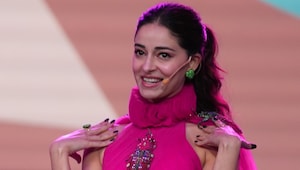Meet 5 Artists Who are Defying Age-old Societal Norms with Their Art
Meet five digital collage artists piecing together a kaleidoscope of imagery that doesn’t just make for idiosyncratic artwork for your living room, but also challenges norms, blurs gender boundaries, and asks socially-crucial questions.

Meet five digital collage artists piecing together a kaleidoscope of imagery that doesn’t just make for idiosyncratic artwork for your living room, but also challenges norms, blurs gender boundaries, and asks socially-crucial questions.

11“Art and design is a learning process for me, and through each series, I ensure I’m learning a new aspect. I’m also looking for newer ways to translate my experience for the onlookers. While I’ve been an artist for a while now, it was only a year ago that I began making digital collages. I find this medium more flexible, and the style, very liberating. I make art when there’s a strong urge in me to express...when there’s something exciting I want to communicate. Through each artwork, I try to relay messages on social issues or essential changes. These messages may not be entirely obvious—I like to keep them subtle—but the captions I use ensure it is clear. For example, my piece with Radha and Krishna is titled, O Radha, I’ll Wash The Rest, and is a comment on gender equality. It is from my series on legendary painter Raja Ravi Varma, which wonders how things would be if the Gods and Goddesses from his paintings lived in Mumbai and interacted with the modern-day world. One thing that I learnt fairly early in life is that there is no one right answer. This made me ask questions and look at things from different perspectives. It also helped me break away from the norms, and unlearn all the things I had been taught as a kid—be it cultural values, morals, even education.”

22“I seek to celebrate the feminine energy with my artwork, by making them the subject of it and adorning them in vibrant ways. You’ll notice I always use a female figure as the primary subject, although, interestingly, I do this rather subconsciously—I am blessed to be surrounded by some strong women, and that comes through in my artwork. But what I always keep in mind are the message, colour, and composition—what I’m trying to convey with my artwork, the aesthetic value of it, and the constitution of the chosen elements. This artwork with Frida Kahlo and Goddess Laxmi, for example, is from Women of Vision, my first-ever collage. It celebrates, as one entity, a woman who is a symbol of feminism and vigour and a goddess who symbolises prosperity and love, among other things. I believe that when women come together, we’re destined for greatness, but this can only be achieved if we support each other. The piece signifies that powerful women create powerful women. The process of creating art, for me, is mainly instinctual—I let the image tell me what it wants to be. As I start compiling images, thoughts start bubbling up, that I choose to act on. And each time I revisit my collages, I learn something new. That’s the thing about collages: there are so many layers and hidden meanings to them. Every collage I make inspires the next one. I draw inspiration from a variety of subjects like the different art movements, the Renaissance period, various architectural styles, natural textures, etc. I love referencing my father’s old National Geographic book set, too!”

33“Most of my work is about creating a culture in itself. The assemblage of images allows me to weave a tale within them. Collage is like alchemy, with a profound culmination of elements. Each piece is like a jigsaw, opening up a new puzzle in itself. The message my pieces usually carry is about life—that it is one cumulative experience— and letting go of our preconceived notions and fears enables us to open up to new possibilities and experiences. My artwork is a live narrative...each interaction between any number of elements can choose to bifurcate its own path, or coexist as a whole to define something bigger than us. Usually, I create a bank of images related to the idea I work upon. Then, I start to create sets of different textures and backgrounds. With the treatment in each image, a story takes place, and I just go with the flow until I feel satisfied with the result. For inspiration, I turn to a lot of artists—varying from abstract expressionism to illustrations—like Charles Burns and Martha Rosler. I also get a lot of ideas from graphic novels and TV shows. And travelling always helps me gain new perspective, too.”

44“I have always been inclined towards history, and strongly believe that storytelling is the key to transcribing art better. That’s why I am completely immersed in this art form—I love the idea of using multiple images to create one piece...to find harmony within chaos. The core motive behind most of my work is to reclaim the Indian vintage design style, with a touch of contemporary creatives...like the one with Bahadur Shah Zafar and the rugs, for example. The Mughal emperor, also known as Muhammad Mu’azzam, used to travel worldwide to collect the best rugs. Here, I’ve used it in a contemporary style, with a representation of his rug collection. I seek inspiration from historic books, scripts and magazines, as well from nature, personal experiences, and my travels. My art is a mix of contemporary, indigenous, historic Mughal, botanical and ceramic elements, and authenticity is the crux for the design. People often tell me that my pieces are very warm, and I’d like to think that the thread that holds it all together is our shared cultural beliefs.”

55“For me, it all began with William S Burroughs’ cut-up experiments and how beautifully his stories formed themselves, making sense to different people in different ways. I guess I try to do the same with my work. At times, I have very personal reactions to the occurrences around me, that end up affecting my views and thoughts. The art I make creates a satirical scenario of those situations, helping me deal with them in a humorous or ‘lighter’ way...not making them any less important, but also not letting them take a toll on my mental well-being. Like the one with people sitting on a floating, pink mattress—Dilli Sirf Dilwalon Ki Hai (which means Delhi only belongs to the large-hearted). There are migrants from every corner of the country that come to Delhi to begin anew, but their acceptance is always in question. The artwork represents their struggle, in a romanticised manner. Also, the figures in my artworks are usually dressed androgynously to transcend any gender expectations and stigmas attached to a specific gender. The attempt is to bridge the distinction between men and women, through the way we dress or look, and rebel against stereotyping. For example, refer to the artwork with sari-clad women carrying guns. Many of my collages, in a way, are directed towards doing away with the labels that are so liberally flung at women in our country each time they try to claim even an iota of the freedom that men feel entitled to.”
Comment
more from Celebrity

The ultimate rhinestone edit for your most extra holiday fashion moments

Pretty, practical, and gift-worthy beauty hampers to shop this season

Fresh, fun accessories shaping the new-age 'It-girl' aesthetic

Lit Christmas gifts that deserve a spot on every book lover’s shelf

Statement earrings you need to complete your perfect holiday fit

Silver going out tops that are your VIP pass to the dance floor

The little white dresses that are about to become your holiday-season power staples
